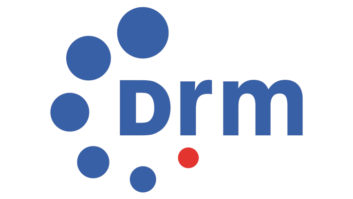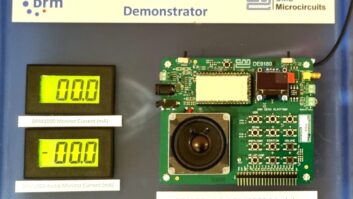Receivers Due From DRM Late This Year; Group Considers Expanding Into Upper Bands
DALLAS Look for a major Digital Radio Mondiale non-auto receiver launch in the latter part of this year. The technology also could someday be used in higher frequency bands. The steering board of the DRM consortium has floated a proposal to extend the system to frequency bands up to 120 MHz. Currently, DRM is a digital transmission for the bands below 30 MHz.
The board plans to bring the proposal to the full DRM general assembly when the group meets in March.
Asked what the proposal would mean and what implications it may have for other digital radio systems, a DRM spokeswoman declined comment, stressing that this was “a proposal.”
These were the two major developments at a DRM symposium held in Dallas in November.
Participants from North and South America attended what was billed as the first such meeting on this continent, according to DRM.
“We are ready for you if you want us,” Senger Chairman Peter Senger told some 90 attendees from the United States, Canada, Mexico, the Caribbean, Chile, Peru, Brazil and Ecuador as they took part in a day dedicated to a technology that permits high-quality mono and stereo radio, free from noise and fading, on the bands currently used for short-, medium- and long-wave analog transmission.
Speakers from eight countries that belong to the DRM consortium stressed its potential for local, national, regional and international broadcasting and for a revitalization of wavebands (such as shortwave) that no longer pull in the mass audiences now listening on FM.
Shortwave and digital
The attendees included radio stations, principally holders of AM and shortwave licenses, as well as regulators and manufacturers of transmission equipment and receivers.
Jan Hoek, vice chairman of DRM and acting director of Radio Nederlands Wereldomroep, chaired the event. He discussed the progress made since DRM was unveiled six years earlier at a ceremony in China and described it as “arguably the fastest technology ever developed.”
Professor Douglas Boyd of the University of Kentucky said a suggestion he made to a group of broadcasters sparked the initial consideration of digital transmission in the AM bands, earning him the title of “grandfather of DRM.”
Transmitter manufacturer DRS Broadcast Technology (formerly Continental Electronics) hosted the symposium and four days of DRM internal meetings that preceded it. Addressing the audience, DRS Vice President Adil Mina said that DRM has the answer for broadcasters wanting to enter the digital age.
Senger said in addition to the new, non-auto receivers coming to the market at the end of this year, the DRM consortium predicts about 1 million radios with the ability to decode DRM signals will be used by the end of 2006 and 4 million by year-end 2008.
According to Senger, the consortium expects transmission hours to grow from the current 350 hours a day to 700 hours per day in 2006, and 1,600 hours per day in 2008.
Senger also said that when a station upgrades to DRM transmission, it pays off the upgrade costs in a decade thanks to electricity savings.
Migration path
As for the proposal to extend DRM to higher frequency bands, Senger said he thought it unlikely that the FM band used in Western Europe (87.5-108.0 MHz) would be used for DRM in the foreseeable future, but believed that bands that have fallen into disuse, such as 66-74 MHz in Eastern Europe, might well be used.
Don Messer of the International Broadcasting Bureau, the chairman of the DRM Technical Committee, gave the audience a basic DRM primer, describing how the system works and what it is capable of.
He predicted that the 21 MHz and 26 MHz broadcast bands would support local transmission while the 9 MHz to 17 MHz bands would be used for intercontinental services and the 7 MHz, 6 MHz and 4 MHz bands would be ideal for national and regional broadcasters who want to cover vast areas.
On the AM band, he suggested the best migration path for existing analog broadcasters would be for them, where possible, to simulcast in DRM on the adjacent channel but with DRM power far lower than analog.
During the gathering, several broadcasters carried out demonstration transmissions to the conference in Dallas.
Temporary licenses
These included Christian Vision from Santiago, Chile; HCJB/World Radio Network from Quito, Ecuador; Radio Canada International from Sackville, New Brunswick; TDF from Issoudun, France; and RNW from Bonaire. The DRS factory in Dallas conducted a local 750 W transmission on the 26 MHz band.
The transmission powers for the international transmissions varied from 4 kW to 50 kW in both mono and stereo.
The day ended with a roundtable discussion that included Jeff White of WRMI(FM) in Miami, the founder of the DRM USA Group. He said the FCC is issuing temporary licenses for DRM operation to shortwave stations in the United States.
Fernando Borjón Figueroa, from the government agency that regulates broadcasters in Mexico, told the group that that it expects to start testing DRM in Mexico soon, along with the ongoing Eureka-147 and Ibiquity HD Radio DAB systems.
Closing the meeting, Senger urged the Americas to consider adopting the non-proprietary DRM international standard for digital radio. “There is no question mark,” he said, “we are here and you can use our open standard.”












